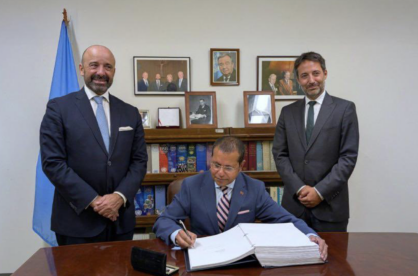An effective education system
Identifying the gaps and improvements required to enhance the quality of education in public schools.

Source: CHSE
Identifying the gaps and improvements required to enhance the quality of education in public schools.

Source: CHSE
The Maldives achieved five out of eight Millennium Development Goals by 2010, including the achievement of universal primary education. An adult literacy rate of over 98 percent has been achieved and sustained since 1999. With a combined effort with key stakeholders over the past 10 years, including the World Bank, UNICEF and the Asian Development Bank (ADB), the Maldives has strengthened its quality of education through various policy reforms. However, there is still ample room for further development of the education curriculum and methods of teaching, to enhance student learning and engagement.
General education in the Maldives is delivered through a network of public and private schools. Public schools across the country offer a combination of primary and secondary education. The structure of the education system is based on five levels; (1) pre-primary / foundation stage, LKG and UKG, (2) primary: grades 1 to 7, (3) lower secondary: grades 8 to 10, (4) higher secondary: grades 11 to 12, and (5) higher education and TVET: national universities and colleges. Two national examinations are delivered at Grades 10 and 12.
With the first constitution of Maldives in 1932, the government recognized its responsibility for the provision of basic education, considering its instrumentality in driving basic, social, and economic development of the country. The 2008 constitution of the country mandates the state to provide free primary and middle school education, and access to higher levels of education. In alignment with the Maldivian Democratic Party (MDP) manifesto, the Solih Administration has provided grants for students pursuing undergraduate level degrees.
Although access to education and student enrollment rates in primary and secondary education has drastically improved and reached the national standard over the years, there is an urgent need to re-structure teaching and assessment methods across schools, especially in the pre-primary and primary levels. Even though private schools may adopt different approaches, public schools have adopted a unified method of teaching, having 30 students per class with examinations at the end of each term. Assessments are conducted as a measure of student performance, creating room for comparison and competition between different students.
The current methods promote traditional ways of learning - through memorization of content with a focus on achieving high grades in examinations. This practice neglects cognitive thinking and enthusiasm for other aspects of learning. Students who do not achieve high grades are considered failures, finding themselves demotivated and excluded from society. Often such students who do not excel academically possess unique skills and ideas different from their peers with high grades. The culture, however, encourages students to aim to place in the National Top Ten and achieve high grades in examinations, to be accepted in the workforce and to secure a future.
Education systems around the world are changing, moving towards treating students as individuals, with a specific skill set unique to themselves, rather than treating them all equally. Most often the term equality and equity are misunderstood in terms of education as well. A Finnish education institute, based on what is considered one of the best education systems in the world, was recently established in Malé - the Finland International School.
The Finnish system implements a holistic teaching and learning environment that aims to emphasize equity over excellence. No standardized testing systems are established as students are graded individually with a grading system created by their teacher. The bar is high for teachers, where only masters degree holders from specialized teaching schools are selected for teaching positions, with an individual principal allotted for every teacher, keeping tabs on their progress. The system, focused on fostering cooperation over competition in schools, teach students the skills of teamwork, collaboration, and team spirit.
In Finnish schools, students are provided with the time and scope to build the best foundation and basics at their own pace. After nine years of compulsory education, students are encouraged to explore what is best for them academically and career-wise. While Finnish students spend a minimum of 20 hours a week at school, for every 45 minutes of learning they spend 15 minutes on play and leisure activities, while being provided special services that fit their special needs and requirements.
It is important to consider such methods of learning in curriculum development as it enhances the development of students as well as creating a better learning environment suited for each individual student. It is time to eliminate traditional methods of learning that suppress the growth of students and makes learning compulsory and a chore. The Maldivian education system must evolve into a system that works for all categories of students, giving opportunities to learn and explore, based on their different skills and abilities, in areas that they find interesting, instead of focusing on a rigid curriculum.



